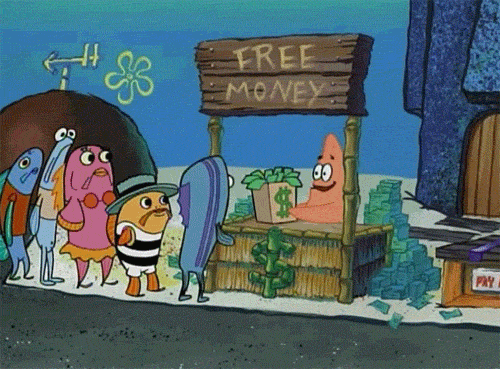Are you a $100 dollar product?
Pricing. It's one of the hardest things in SaaS. Ask any SaaS founder about their pricing and they all say the same words a lot of people use on their Facebook status: "It's complicated".We've changed our pricing a couple of times since the beginning too. When we launched in private beta we wanted to have both an attractive and easy-to-understand pricing. But, as always, you're never right from the beginning. In fact: you'll never be right at all. You can only be right if you're willing to change your pricing over time really. What we learned from our mistakes about pricing thus far is this:
- It isn't in the numbers: it's the real value it represents
- Don't price too cheap
- It needs to be scalable
Let's dive into this a bit more.
It isn't in the numbers
Almost every blog post out there talks about numbers, which is definitely an important factor, but not to start your pricing strategy with. Let's just acknowledge something everyone will agree on:"The price of your product must represent a fair ratio of the value it represents"That's totally fair, right? This is how almost every potential client thinks of it. If you charge $1,000 per month for a product that saves them $10,000 a month it's a no-brainer. Heck, you can even increase your pricing to $5,000 if you want and they will still pay you.
"Just put a price on it and see what happens" ― Des Traynor (CEO of Intercom)
The case above is the first thing you have to think about when you're designing (of use advertisement design) your product: what is the real value you provide with your product? And here's exactly where the title of this blog post comes in place: Are you a $100 dollar product? Or are you more likely to be a $50 dollar product? Or a $500, $1,000 or even a $10,000 one? At first, it's not about charging $9,99, $10 or $11 dollars per month. That won't do the trick. But it is crucial to know in which category of pricing your product falls: It's not always necessarily the case that a low-cost product doesn't add that much value. I mean: a simple $5 dollar per month Chrome extension that helps you track your time as a freelancer to collect the actual hours you work for a client makes your life so much easier because you can focus on your work instead of documenting the hours for invoicing. And thus, this Chrome extension has a really high value for you because it saves you time.In general, you can say that the price must represent the value a customer gets from either saving time, money or hassle. I mean: Salesforce isn't cheap at all, but if you are a large organization, Salesforce takes care of a lot of things you otherwise have to do manually or with different tools. The monthly price for this product represents a lot of value for the user.
It's not always necessarily the case that a low-cost product doesn't add that much value. I mean: a simple $5 dollar per month Chrome extension that helps you track your time as a freelancer to collect the actual hours you work for a client makes your life so much easier because you can focus on your work instead of documenting the hours for invoicing. And thus, this Chrome extension has a really high value for you because it saves you time.In general, you can say that the price must represent the value a customer gets from either saving time, money or hassle. I mean: Salesforce isn't cheap at all, but if you are a large organization, Salesforce takes care of a lot of things you otherwise have to do manually or with different tools. The monthly price for this product represents a lot of value for the user.
Don't price too cheap
When you're just starting out in building your SaaS, you want new customers ASAP. Yes, we get it. We've been there, done that. But if we want to give you once advice about pricing it's this: don't price too cheap. It's better to price too high and hear a couple of "NO's" than to bring everyone on board to cheaply and have to increase your pricing later on. When we first started out we had amazing prices. Our smallest package was only $7 a month. We quickly found out that this wasn't representing the real value of our product at all.Being a feedback tool, our users are really eager to use our product within their applications and thus soon there will be traction on their feedback boards. Once there's traction on our client's side, there are questions and support requests on ours. When a client of $7 dollars a month sends you a chat or support ticket almost on a weekly basis, you can immediately tell the price they are paying doesn't represent the amount of value they are getting from your product.So, we quickly found out that our product adds real value to EVERY type of customer that is using our product. Once you implement our product you will get traction from your users and thus you need to get more out of the product itself. We decided to raise the price to $15 dollars a month which didn't affect the sign-up conversions at all. In fact: we saw our sign-ups increasing. Maybe that's why this is one of our favorite quotes:
When we first started out we had amazing prices. Our smallest package was only $7 a month. We quickly found out that this wasn't representing the real value of our product at all.Being a feedback tool, our users are really eager to use our product within their applications and thus soon there will be traction on their feedback boards. Once there's traction on our client's side, there are questions and support requests on ours. When a client of $7 dollars a month sends you a chat or support ticket almost on a weekly basis, you can immediately tell the price they are paying doesn't represent the amount of value they are getting from your product.So, we quickly found out that our product adds real value to EVERY type of customer that is using our product. Once you implement our product you will get traction from your users and thus you need to get more out of the product itself. We decided to raise the price to $15 dollars a month which didn't affect the sign-up conversions at all. In fact: we saw our sign-ups increasing. Maybe that's why this is one of our favorite quotes:
"Just like when a restaurant serves steaks for 3 dollar; you don’t take it" ― Des Traynor (CEO of Intercom)
Then there are clients that quickly grew to the biggest plan which was, in the beginning, an unlimited plan. Yes: everything included. Here we learned a new lesson: your pricing should never be fixed or unlimited. Here's why.
It needs to be scalable
As with almost everything you do: pricing needs to be scalable also. That is in our opinion at least. Why? Well, certainly when you're starting out with an 'unlimited plan' or 'fixed fee' you are highly attractive for basically all companies out there. That's a good thing, right? Nope. At least, not in our experience. When you introduce such plans you will attract both small companies who will never use (or organically grow to) your biggest unlimited plan and big companies that immediately use all of your bandwidth with their usage data. Ouch! What ends up happening is that you'll have a couple of big fish that costs you more than they represent. And that's never a good thing.Once we introduced our product to the public with our 'unlimited plan' included, we immediately got traction from a couple of big companies. They wanted to sign up for our unlimited plan. When we asked about the number of users they were bringing with them, we fell off our chairs. While these numbers are tempting and signing big-name clients is very good for your ego, it's really killing for your business.
When you introduce such plans you will attract both small companies who will never use (or organically grow to) your biggest unlimited plan and big companies that immediately use all of your bandwidth with their usage data. Ouch! What ends up happening is that you'll have a couple of big fish that costs you more than they represent. And that's never a good thing.Once we introduced our product to the public with our 'unlimited plan' included, we immediately got traction from a couple of big companies. They wanted to sign up for our unlimited plan. When we asked about the number of users they were bringing with them, we fell off our chairs. While these numbers are tempting and signing big-name clients is very good for your ego, it's really killing for your business.
“Value is more expensive than price.” ― Toba Beta
When you start out, you really need to grow your product organically and dynamically with your clients. Scale while they scale. Since pricing is the number 1 factor for growth, your pricing should be dynamic and scalable too. That's why we introduced a separate pricing plan that increases when our clients increase their usage.We signed a couple of big fish in the meantime, but, with a scalable pricing plan, this is no longer a problem at all: when they scale, our pricing scales and thus we scale. Win-win-win.

